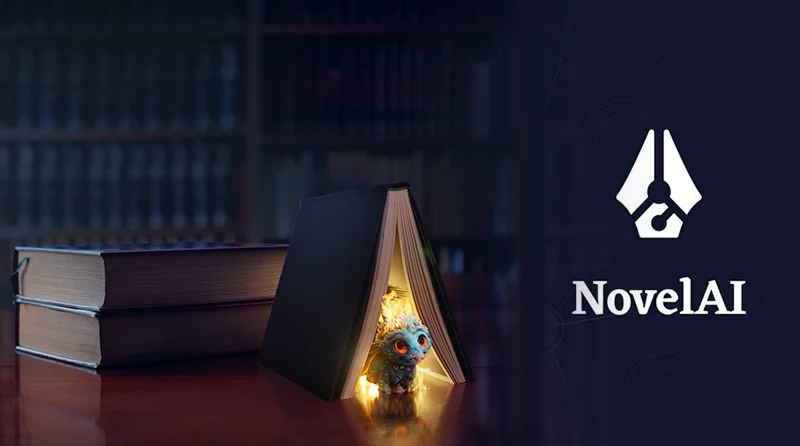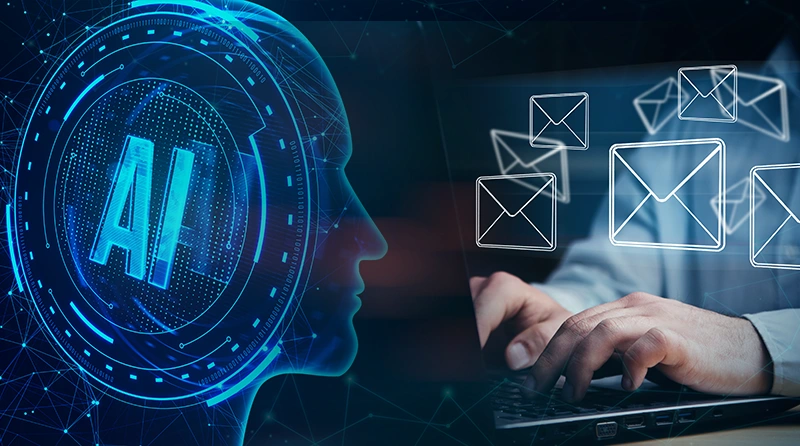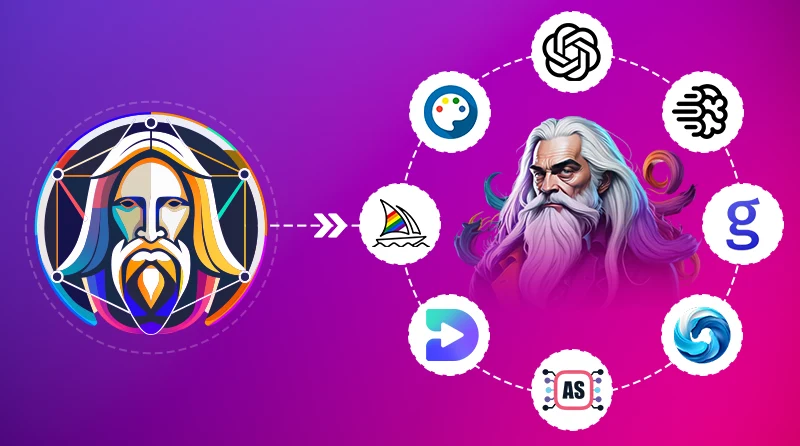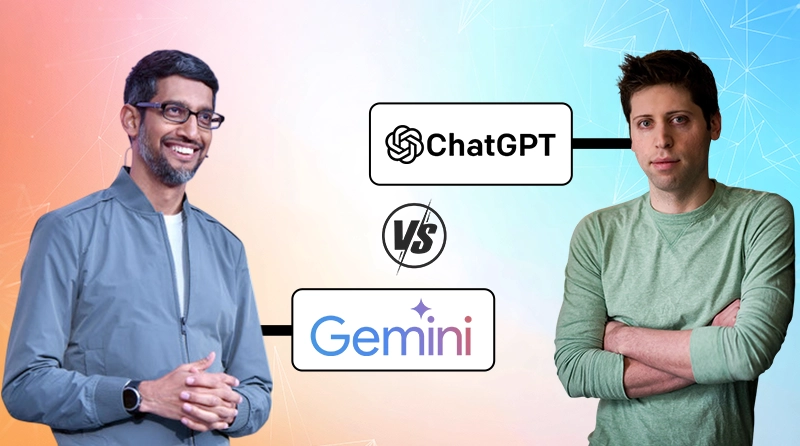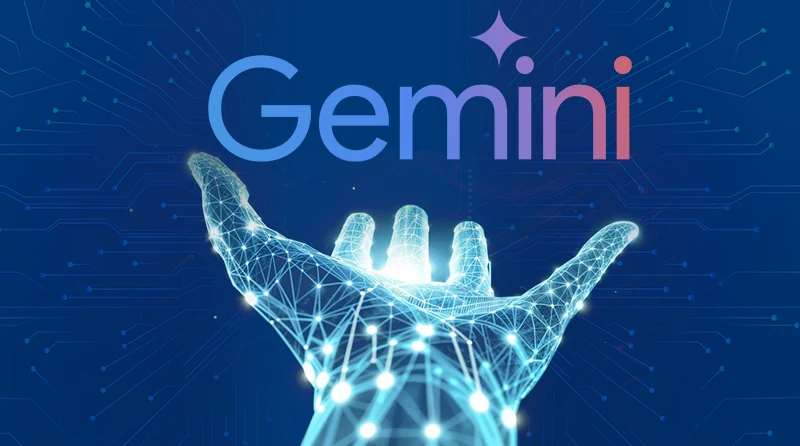DeepSeek vs ChatGPT: Which AI Model is Best For You?
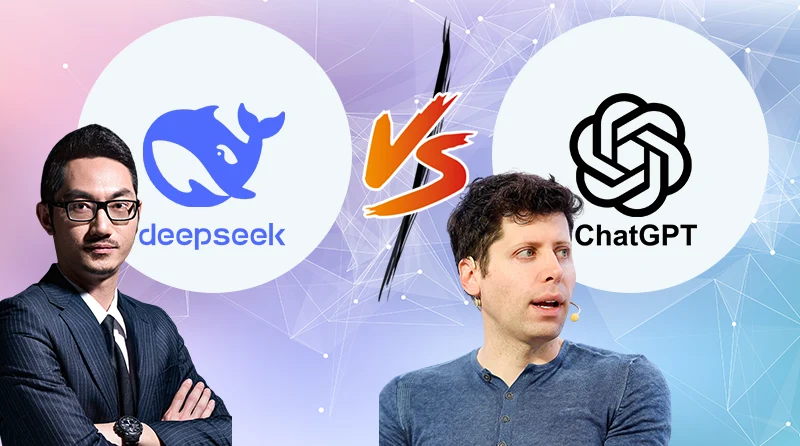
Whether it’s writing stories, assisting with daily tasks, or generating code, today’s AI tools can do it all. AI is in advanced mode, and the year 2025 is different as the number of AI tools is rapidly increasing every day compared to previous years.
With new AI tools being introduced every day and the AI market skyrocketing, there is a hot, debatable question: which one is the best, DeepSeek or ChatGPT?
Both tools are popular among professionals, but when DeepSeek launched, it was just another tool. With its evolution and rising popularity, it has reserved its space in the list of the best AI chatbots in 2025.
The global AI chatbot market is expected to reach USD 67 billion by 2033, growing at a CAGR of 26.4%.
Reason?
The demand for generative AI chatbots is rapidly rising due to their use cases across industries, and tools like ChatGPT, DeepSeek, and Gemini have separate fan bases. But when it comes to differentiating ChatGPT vs. DeepSeek, things are on a different level, and opinions are diverse.
If you are also interested in finding out which one is the best for your purpose, you have landed at the right article, and this will be your perfect resource to clear things up about which one is better. By the end of this blog, you’ll know exactly about the difference between DeepSeek and ChatGPT and which one suits your needs.
Let’s continue with the blog and start with some basics!
What is DeepSeek?
It is an AI assistant developed by a Chinese AI development company named DeepSeek. This AI assistant is an open-source LLM(Large Language Model) that helps users with a variety of tasks and is known for efficiency, customization potential, and low operational cost compared to its other competitors, such as Gemini, ChatGPT, and others.
Origin
DeepSeek AI assistant emerged from a team of innovative AI experts, researchers, and engineers. Its first breakthrough was in 2023 as a DeepSeek Coder. With the release of DeepSeek-V3 and R1, it had another breakthrough in 2025, challenging major players such as OpenAI and Meta. Now, it’s one of the most downloaded AI assistant apps worldwide.
What can DeepSeek do?
- Answer questions and provide explanations.
- Help with writing, coding, analysis, and creative tasks
- Process uploaded files (images, PDFs, Word docs, Excel sheets, etc.)
- Support conversations in multiple languages
- Research and learning assistance
Its key milestones involve:
- DeepSeek Coder(for coding)- November,2023
- DeepSeek LLM(general purpose LLM) – December, 2023
- DeepSeek V2(introduced MoE architecture)- June 2024
- DeepSeek V3(MoE & MLA)- December 2024
- DeepSeek R1- January 2025
- DeepSeek R1-0528- May 2025
The above represents the version history only. Let’s have a closer look at DeepSeek’s technological evolution for completely understand DeepSeek vs. ChatGPT.
Technology Evolution
- Mixture of Experts(MoE): The MoE architecture, introduced with V2 and V3, is an important factor contributing to DeepSeek’s performance. It consists of several neural networks and is very efficient, reducing hardware costs.
- Multi-Head Latent Attention(MLA): A novel algorithm and another factor contributing to the model’s overall performance
- Reinforcement Learning(RL): This makes the DeepSeek R1 model efficient in problem solving through complex reasoning, reflection and finding alternate ways.
- Distillation: DeepSeek-V3 distills reasoning capabilities from the DeepSeek R1, improving reasoning performance.
Note: Distillation is a technique to transfer of knowledge from a complex language model to a simpler and efficient version.
Core Strength
The better way to differentiate between any two apps, software, or AI tools is to look into their strengths. So, before we reach any conclusion about DeepSeek vs.. ChatGPT, let’s have a look at DeepSeek’s core strength first.
- Efficiency: DeepSeek leverages MoE to achieve high performance at lower computational cost. This occurs by activating only relevant sub-networks for each query.
- Customization: Due to its open-source nature, users can download DeepSeek’s models and can modify their code for specific needs.
- Cost: DeepSeek is a native, free chatbot, and any one can use it.
- High Reasoning Capacity: Its high reasoning capacity makes DeepSeek a perfect tool for mathematics and programming
- Scalability: DeepSeek has a high output capacity with large context windows that can handle up to 128,000 tokens.
- Reinforcement Learning: DeepSeek focuses on reinforcement learning, rather than supervised learning, as its competitors do.
- Industry Applications: Healthcare, finance & banking, manufacturing, eCommerce, telecom, general AI tasks, and others.
What is ChatGPT?
ChatGPT, developed by Open AI is a conversational AI chatbot that started global generative AI revolution. GPT stands for Generative Pre-trained Transformer that is an architecture.
From the technical definition perspective ChatGPT is closed-source large language model that can generate human-like text and converse with its users with tailored responses. Its key characteristics are fluency, broad knowledge, and seamless integration. Comparing ChatGPT vs. DeepSeek or ChatGPT vs. Gemini, ChatGPT is more popular option among users who want to generate creative text, images, code, and more.
Origin
ChatGPT is a product of the leading American AI research lab, OpenAI, founded in December 2015 by Sam Altman, Ilya Sutskever, and Greg Brockman. This generative AI sensation based on GPT-3.5 architecture officially debuted in November 2022, and within two months of its launch, it had 100 million users. Since then, it has become the fastest-growing consumer application in history.
The next major breakthroughs are GPT-4 in 2023 and GPT-4 Turbo/GPT-4o in 2024. ChatGPT’s latest version is GPT-5 launched on Aug,2025 with deep reasoning capability, making it a latest smart and efficienct AI assistant not only compared to its previous version also to its competitors like Gemini, DeepSeek, Grok, and others.
What can ChatGPT do?
- Answer questions with detailed, context-aware explanations
- Assist with creative writing and storytelling
- Generate, debug, and explain code in a multitude of programming languages
- Analyze uploaded files (PDFs, spreadsheets, Word docs, images, etc.)
- Support conversations in 50+ languages
- Provide tutoring, research help, and study planning
- Integrate with web browsing, plugins, and third-party tools (for Plus users)
ChatGPT’s key milestones involve:
- GPT-3.5 & ChatGPT (Free) – November 2022
- ChatGPT Plus (GPT-4) – March 2023
- GPT-4 Turbo (128K context, updated knowledge) – November 2023
- Custom GPTs & GPT Store – January 2024
- GPT-4o (“Omni”) – Multimodal, real-time voice & vision, May 2024
- GPT-5 – Deep thinking and research, August 2025
Technology Evolution
- GPT-1 launched in 2018 with limited capability for generating and understanding text.
- GPT-2 was released in 2019 and has more capabilities than GPT-1, such as summarization, translation, and question-answering. However, these capabilities were withheld due to ethical concerns.
- With the launch of GPT-3 & 3.5 (2020), the golden era of generative AI started. This model was capable of generating simple text to contextually appropriate text, a deep understanding of context, and a variety of tasks.
- The next sensation was GPT-4, introduced in 2023, which was the most advanced version of ChatGPT compared to previous versions. This model introduced multimodal capability(text + image input) and improved reasoning, accuracy, and safety.
- From 2023 to 2024, it received continuous updates, such as plugins, a code interpreter, custom GPTs, browsing, file uploads, and integration with Microsoft (Copilot).
- GPT-4 Turbo and GPT-4o(“o” for omni) launched in 2024 with characteristics such as faster, cheaper, multimodal (text, audio, vision), and real-time voice interaction.
- GPT- 5 (launched in 2025) is the most advanced version with deep NLP understanding, deep thinking, content generation and editing, complex problem solving, coding assistance, knowledge sharing, research, and more.
Core Strength
It is essential to understand the core strengths of ChatGPT, which will help you differentiate DeepSeek vs. ChatGPT. So, here are these:
- Efficiency: Utilizing optimized transformer models, ChatGPT generates quick and relevant responses in real-time.
- Conversational Fluency: The latest mode mimics human-like conversations with fluency and excels at maintaining context across multi-turn dialogues.
- Broad Knowledge Base: Trained on vast data and live access to the internet for producing relevant results.
- Customization: Individuals and enterprises can create custom GPTs through simple prompts and based on specific use cases.
- Cost: Comes with freemium model with access to GPT-3.5 features and paid plan starts at $20(ChatGPT Plus) and $200(ChatGPT Pro).
- Ecosystem Integration: ChatGPT can seamlessly integrate with data and productivity tools, web browsers, code execution, document management, and third-party apps via API.
- Industry Applications: Customer service, education, programming & IT, healthcare, research and analysis, and productivity.
Deepseek Vs. ChatGPT
Now that you have accessed essential information about these two leading AI assistants or tools, DeepSeek and ChatGPT, it’s time to move forward and learn more about DeepSeek vs. ChatGPT. Although we got the idea, let’s make it simple through a table.
| DeepSeek vs. ChatGPT | ChatGPT | DeepSeek |
|---|---|---|
| Cost | Paid plan starts at $20/user | Free |
| Core Features | Multimodal(text, voice, etc.), conversational, workflow automation, code interpreter, custom GPTs, and plugins, as well as an iOS and Android app, are available. | Open-source LLM supports file uploads(PDF, Excel, Doc, images, etc.), coding & mathematical problem solving focus; 128K+ context window, available as a desktop/mobile app. |
| Strengths | An excellent AI allrounder tool from human-like conversation, coding, research, to creative writing | The perfect option for technical tasks such as complex logical reasoning, coding, mathematical problem solving, and precise answers |
| Training Data | Global coverage, primarily supporting the English language, trained on the vast publicly available data on the Internet, such as books, articles, blogs, codes, and more. | Trained on open and proprietary data sets up to 2024, the DeepSeek coder is trained on 2+ trillion tokens of code from GitHub and other open repositories. |
| Use Cases | Content creation, education, research, marketing, business automation, human-like conversation, text summarization, and more. | Coding, technical documentation, analytics, research, logical tasks, and businesses in need of affordable solutions |
| Model & Flexibility | Exclusive (Restricted). ChatGPT’s model offers high features but lacks some technical adaptability. | Open-Source. DeepSeek’s models, like V3 and R1, are open and allow for customization; they utilize MoE architecture. |
| User Interface | The user interface is user-friendly; anyone can use it to access features like file uploads, voice interaction, and custom interactions. | Although DeepSeek’s UI is also simple, it offers fewer features from the perspective of ChatGPT vs. DeepSeek. |
| Ease of Use | Best for all users, from a student to a professional. | Best for developers and technology enthusiasts. |
| Privacy | ChatGPT offers more transparency. Data is stored on US servers, and opt-out features, temporary chats, etc., are available. | Offers less transparency. Data is stored on Chinese servers with less user control. |
Feature: DeepSeek vs. ChatGPT
These are the features that make AI Chatbots unique. DeepSeek and ChatGPT are both tremendous in their own right. However, to clarify the differences, it is crucial to look deeper into their features and compare them.
Let’s break down the differences in terms of features.
ChatGPT vs. DeepSeek: Primary Purpose
ChatGPT is a general-purpose tool that focuses on natural language processing(NLP) to optimize conversation, general assistance based on users’ queries, and content creation, such as text, images, and videos.
DeepSeek is designed for technical tasks such as coding, data retrieval, problem-solving, deep and analytical thinking, research-oriented tasks, and tutorials.
Model Architecture
DeepSeek’s model architecture is MoE, which stands for Mixture-of-Experts. In place of using the entire neural network, MoE splits the model into specialized sub-networks called “Experts.” When users ask a question, the router decides which experts are best suited to provide relevant answers to them.
For example:
Write a Python function for login; the code expert will be activated. Alternatively, solve ∫(x² + 3x) dx from 0 to 2; the math expert will be activated.
In terms of ChatGPT vs. DeepSeek, ChatGPT utilizes a transformer-based model, a neural network that processes words in parallel. This enables ChatGPT to understand long-range context. Additionally, GPT leverages two key techniques: Supervised Fine-Tuning(SFT) and Reinforcement Learning from Human Feedback (RLHF). That makes it train and learn through human conversations.
Performance Capabilities
When it comes to performance, DeepSeek vs. ChatGPT, both perform well in diverse arenas.
For example,DeepSeek’s V3 and R1 are the best in technical precision and delivers great performance across coding, mathematics, and algorithmic reasoning. These models are trained over 2 trillion tokens and utilize reinforcement learning that produce perfec results and make it favorite among developers. Another key factor contributing to the performance of DeepSeek is MoE.
ChatGPT (GPT-4o) is the best all-rounder. It has high perplexity—it talks naturally, is great at general writing, and stays current with news because it can browse the live web (something DeepSeek can’t do). While both are strong in coding, ChatGPT focuses on clarity and safety, often checking its answers.
DeepSeek is built for technical tasks and efficiency. The main difference is that ChatGPT needs expensive cloud power to run, but DeepSeek’s simpler design makes it cheaper and faster to run on standard computers.
Accessibility
As we have read in earlier sections, ChatGPT offers fremium model with some limitations but DeepSeek is free for use. While using ChatGPT, if limits are reached users downgraded to the lower models or have to wait for the time when free limits are upgraded. Comparing DeepSeek vs. ChatGPT, DeepSeek is the winner here.
Integration Flexibility
DeepSeek is an open-source LLM that is free for all, and enterprises can deploy it on-premise, having greater control over data and customization for technical tasks through API. On the other side, ChatGPT operates as a cloud service with an extensive set of APIs, an accessible web interface, and a plugin ecosystem that you can utilize to integrate with business tools(Slack, Notion, and Microsoft products). But sometimes it lacks open-source customization.
Language Support
ChatGPT has global coverage, support global languages and deep proficiency in English but lacks in technical dialects outside english. DeepSeek also support international languages but performs well in Asian languages, suitable with technical jargons, and support domain specific vocabulary.
Customization
In terms of customization, difference between DeepSeek and ChatGPT is DeepSeek offers more control to the enterprises where developers can tune private datasets for their needs. For example – where accuracy and confidentiality is priority such as healthacare, finance, or law.
Although ChatGPT allows for custom GPTs and instructions but less support to the fine tuning of datasets. It is good at ready-made usability and can adjust tone, context, and domain but, unsuitable for deep customization.
Speed and Efficiency
As we have read earlier in this blog that DeepSeek utilizes MoE that deploys experts based on query. Thus, it makes faster inference on consumer hardware, consumes low GPU memory, and requires low setup.
On the other hand, the GPT-4o model is also highly optimized but still dense, and requires massive cloud infrastructure, high operational cost, and performs slowly with the free version. From the speed and efficiency perspective, ChatGPT vs. DeepSeek, DeepSeek is a little bit ahead.
Verdict: Choose DeepSeek if you need features for technical and highly logical tasks or If you need an AI assistant that is versatile, user-friendly, and upto date, ChatGPT is the right choice.
Related Guides:
Pricing: DeepSeek vs. ChatGPT
DeepSeek is an affordable option for businesses that want to use an AI tool for logical and technical tasks without high subscription fees. Some versions are even free to use, which is great for small businesses or research firms that don’t have much money. However, enterprise-level customization or support may add extra costs, such as if you want to use the API, then it can cost you:
For example- DeepSeek-V3: ~$0.14 per 1M input tokens, $0.28 per 1M output tokens, DeepSeek-R1: ~$0.16 per 1M input tokens, $0.32 per 1M output tokens
ChatGPT is different; when using paid model(ChatGPT Plus- $20/month, ChatGPT Pro-$200) you pay for it every month. You can use the free one (like GPT-5 with some limitations), but you have to pay to get the better stuff like ChatGPT Pro or Plus with faster speeds, and less waiting time. For big companies, OpenAI offers enterprise plan for large-scale use.
Verdict: Actually, it depends on your needs, so pricing is not a barrier, and there is no clear winner. But in terms of cost-effectiveness, DeepSeek vs. ChatGPT, DeepSeek is the winner.
Privacy and Security: Difference Between DeepSeek and ChatGPT
When it comes to using any AI tool, performance is an important factor. But the first question that comes to mind is: Should I trust this tool with sensitive data?
ChatGPT and DeepSeek are no luxury to it and it’s a valid question to ask before you make your mind. So, let’s have a look at difference between DeepSeek and ChatGPT in terms of privacy and security.
DeepSeek models are downloadable and open-weight that means these models can be deployed on private servers instead of leaving data to the outside server. However this happens when you use it at enterprise level and in a self-hosted environment.
This makes DeepSeek an ideal choice for researchers, finance, and other industries where data must not be handled by third-party servers. However, DeepSeek’s cloud-based services is subjected to the Chinese jurisdiction and ay raise compliance concern.
From ChatGPT vs. DeepSeek perspective, ChatGPT is a cloud-native service managed and owned by OpenAI where data is passed through by its servers located in USA. Other than enterprise plan, prompts are processed through servers and logs for service improvement. Although enterprise plan offers robust security and comply with regulations, but still relies on OpenAI’s governance and security.
For common users and businesses, OpenAI has implemented strong encryption, access controls, and data retention policies that are aligned with international standards. But as there is no such self-hosting option that may create some privacy issues.
Verdict: Both tools offers security and privacy at their level but not universally safer especially when a common users use it because prompts and user inputs are used for training. But yes, if you are deploying DeepSeek self hosted option, it will be more safer than ChatGPT as data control will be in your hands.
Conclusion on DeepSeek vs ChatGPT
At this point, one thing is sure that AI landscape is not as now as earlier it is advancing and the tools like DeepSeek, ChatGPT and others are ready to touch different realms with advancements. Through out the blog we have compared DeepSeek vs. Chat GPT based on different parameters and hope you’ve also got the idea that both are fundamentally different, offer unique features, and has use cases. So, the things depends on your goals.
So, if you need an all-rounder and versatile AI tool for tasks like creative writing, content creation, and casual conversation, choose ChatGPT. But if your need is technical accuracy, coding, and logical problem-solving, DeepSeek is your AI assistant.
FAQ’s on ChatGPT vs DeepSeek
1. Is DeepSeek open-source?
Yes, DeepSeek allows its users to use and modify the code, and its algorithms, models, and training details are open-source and accessible for all.
2. Which is better: DeepSeek vs. ChatGPT?
Both are better on their own right. On one side, DeepSeek excels in coding and logical tasks; on the other side ChatGPT is your perfect AI tool that you can use everyday for creating text, images, and can converse with it.
3. ChatGPT vs.. DeepSeek: Which supports better integration?
You can integrate ChatGPT seamlessly with business tools and it also supports for file handling and other tasks. But DeepSeek, do not offer any integration feature until and unless deployed in a local or self-hosted environment.
4. DeepSeek vs. ChatGPT: which one is more accurate?
If you need more information in a general context ChatGPT is far better than DeepSeek and latest GPT models like GPT-4o, 5 access live web and provides reliable answers powered by deep thinking. DeepSeek is great at problem solving, coding, mathematics, and technical tasks but not accurate while providing any generalized information.







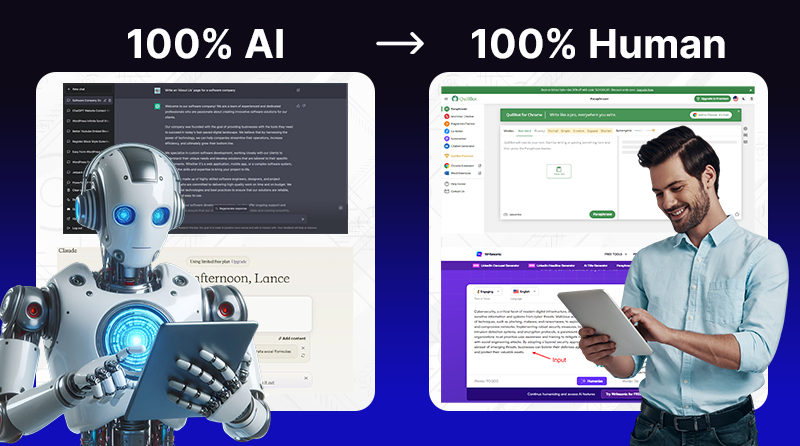
![10 Best AI Note-Taking Apps [ 2025 Note Taker Tools]](https://awesmai.com/wp-content/uploads/2025/07/Best-AI-Note-Taking-Apps.webp)
